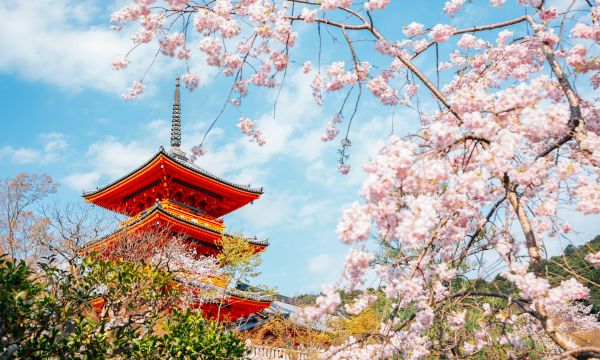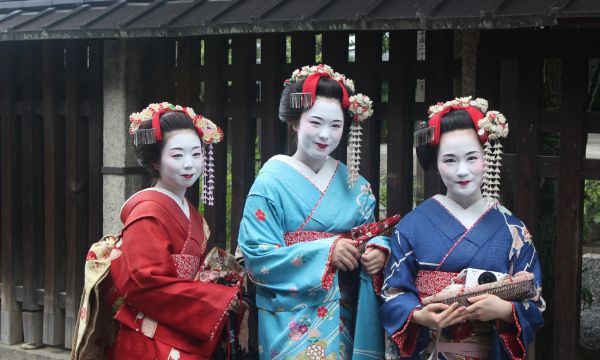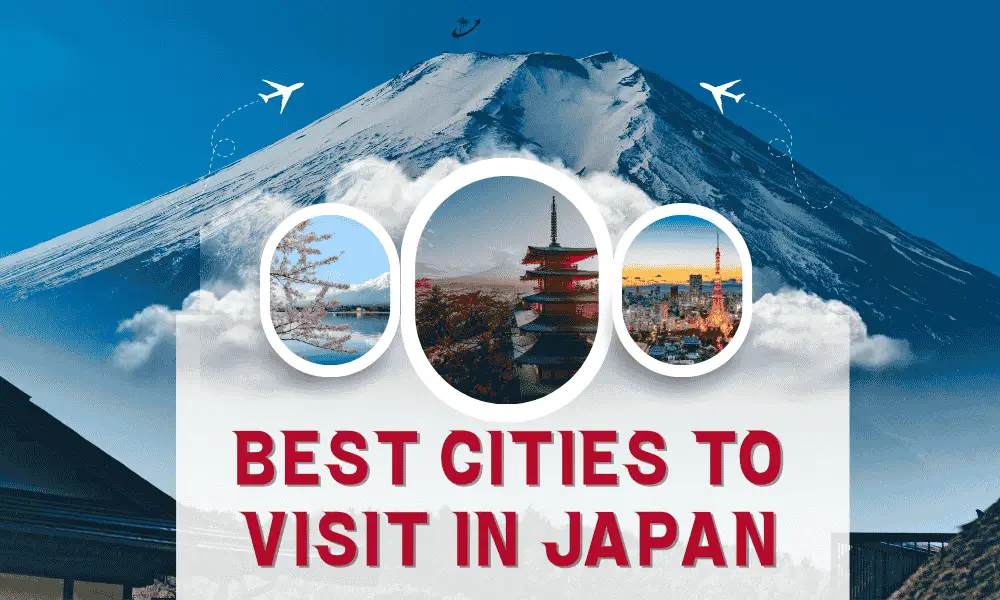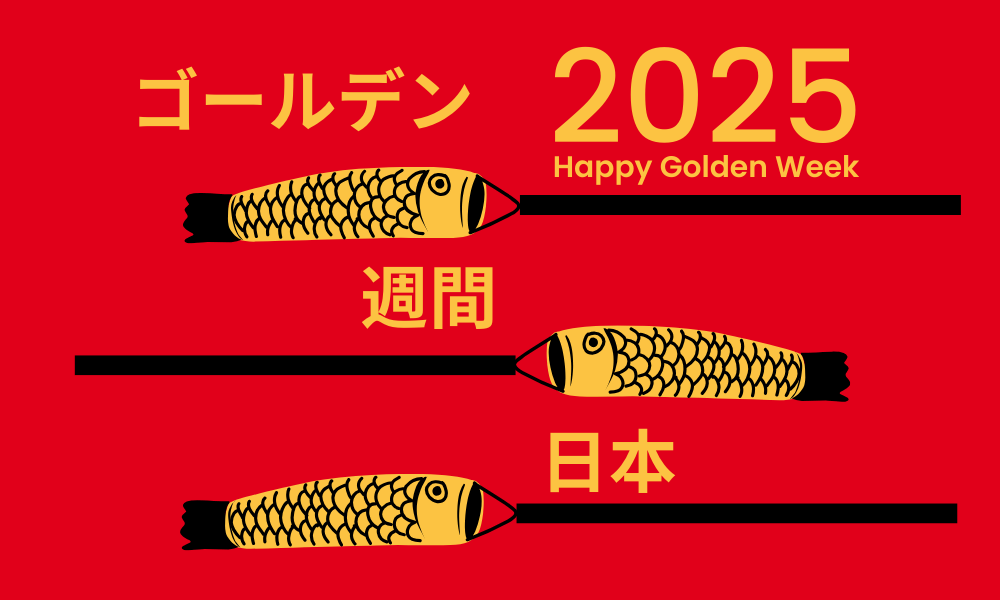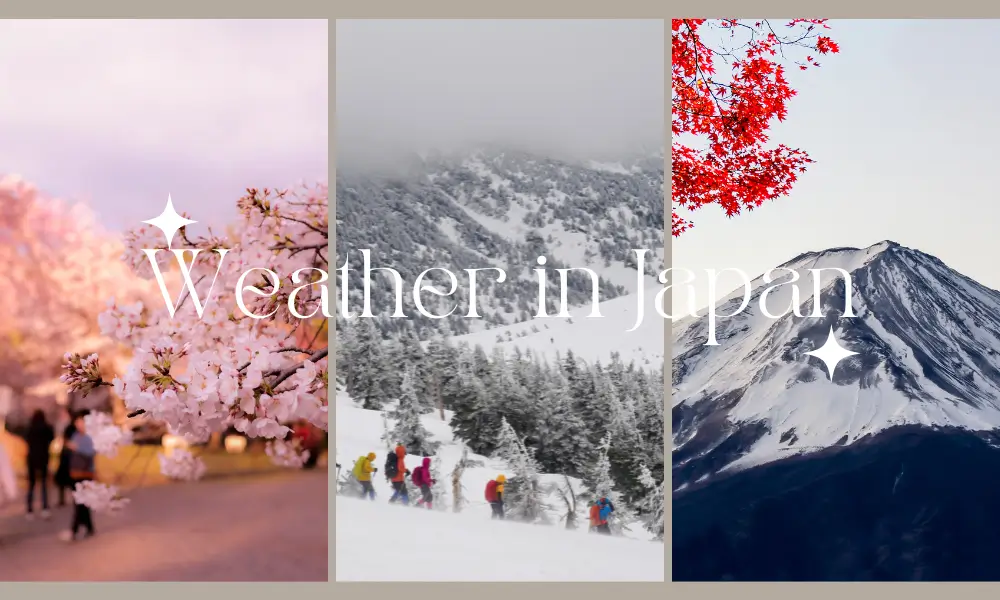Last updated on November 23rd, 2024 at 05:57 pm
Show the relevant content
Toggle- When is the best time to visit Japan?
- Issue: When is the best time for you to go to Japan?
- Natural disasters and volatile weather.
- Tourist seasons and crowds
- Cultural Activities and Festivals:
- Cost Implications:
- Spring (March to May):
- Summer (June to August):
- Fall (September—November)
- Dec-Feb (Winters)
- The best time to go to Japan
- Japan Time to EST:
- Japan in January:
- Japan in February:
- Japan in March:
- Japan in April:
- Japan in May:
- Japan in June:
- Japan in July:
- Japan in August:
- Japan in September:
- Japan in October:
- Japan in November:
- Japan in December:
- Winter in Japan:
- FAQ
When is the best time to visit Japan?
Traveling to Japan is an amazing experience filled with stunning sights and delicious food. When planning your trip, one important decision is where to go. This choice affects your experience, including the weather and activities you can enjoy during your visit.
Issue: When is the best time for you to go to Japan?
Japan is a country that showcases four stunning seasons, each with its own charm. However, this variety can make it tricky to decide when is the best time to visit. Many travelers find themselves torn between the enchanting cherry blossoms of spring and the vibrant autumn leaves. Some are eager to hit the slopes for winter sports, while others look forward to the peaceful summer festivals.
Each season has its pros and cons. If you’re not careful about choosing the right time for your visit, you might miss out on special events like the cherry blossom festivals. For example, traveling during the off-peak season can save you money, but you might miss out on popular experiences. Conversely, visiting during peak times could mean dealing with crowded attractions and higher prices.
Additionally, local surveyors face various challenges due to these seasonal factors.
Also Read: Is it safe to travel to japan alone?
Natural disasters and volatile weather.
Japan’s weather can vary a lot. In Hokkaido, winters are really cold, while places like Okinawa enjoy warm, sunny weather almost all year round. When planning a trip, travelers should keep in mind not just the usual climate, but also the chance of heavy rain at certain times, the risk of typhoons, and even the possibility of earthquakes.
Spring is one of the best time to visit Japan to see cherry blossoms, but be aware that it can also be rainy, especially in early spring.
Tourist seasons and crowds
During busy travel seasons, popular spots in cities like Tokyo—especially areas like Harajuku and Shinjuku—can get really crowded. Instead of enjoying a peaceful experience, you might find yourself struggling for space and quiet. In Tokyo, many hotels get fully booked months before cherry blossom season, which means prices go up and options become limited.
Cultural Activities and Festivals:
Japan has a rich traditional culture, and you can find various festivals and events happening all year long. However, many of these events take place during busy tourist seasons, which can make planning your trip more challenging. People often wonder if they made the right choice by missing out on popular events like the Gion Matsuri in July or the Sapporo Snow Festival in February.
Cost Implications:
Cost: Traveling during certain times of the year often means paying more for flights and hotels. You’ll also notice that local transportation costs, especially taxis, go up. This can be a big hurdle for budget travelers. For example, flights to Japan during Golden Week (late April to early May) can cost 20–30% more than during off-peak times.
Hobbies and Getaways:
Absolutely! Every traveler has their own preferences, whether it’s skiing in Hokkaido, enjoying the lively atmosphere of Tokyo, or relaxing on a beach in Okinawa. Finding the right season that matches these interests can make planning a trip more complicated.
Resolution: Seasonal Suggestions for best time to visit japan
Spring (March to May):
Blossoming cherry trees in spring: Spring is one of the best times to visit Japan, thanks to the stunning cherry blossoms. From late March to early April, sakura trees bloom all over the country, attracting visitors from around the world. While this is a magical time, it can also get very crowded. If you want to enjoy the blossoms without the crowds, consider places like Kanazawa or Matsumoto, which offer beautiful cherry blossoms and a more relaxed atmosphere compared to Tokyo and Kyoto.
Another popular spring tradition is Hanami, or flower viewing, where locals and tourists gather under cherry trees for picnics. Besides the blossoms, the weather is mild, making it a perfect time to explore sights like Mount Fuji and the historic city of Kyoto.
Summer (June to August):
Japan’s summer is lively, filled with festivals and outdoor activities. July is usually the wettest month due to the rainy season. If you love festivals, this is a fantastic and best time to visit Japan, as many places celebrate events like the Gion Matsuri in Kyoto and the Nebuta Matsuri in Aomori. For beach lovers, Okinawa has beautiful beaches that are often less humid than those on the mainland.
August is a busy holiday month for many Japanese people, which means popular tourist spots can get quite crowded. During the summer, you can also enjoy Bon Odori, a traditional dance festival. These dances are a fun way to experience Japanese culture, and there are plenty of stalls selling delicious local snacks to try.
Fall (September—November)
In Japan, autumn is a time of stunning colorful leaves, cooler temperatures, and fewer tourists than in spring. This makes it perfect for nature lovers to enjoy the scenery without the summer crowds. Gorgeous places like Nikko and the snow-capped Japanese Alps look even more amazing in the fall. The pleasant weather is also great for outdoor activities like hiking and sightseeing.
Autumn is a wonderful time to join in the Takayama Festival, a charming celebration with beautifully decorated floats and traditional music. Plus, for food lovers, it’s an exciting season to taste fresh fruits and vegetables and try delicious regional dishes.
Dec-Feb (Winters)
The climate in Japan during winter is mild, making it a great time for winter sports enthusiasts. Hokkaido, in particular, is known for some of the best cross-country skiing and snowboarding in the country, with 14 five-star hotels available for visitors. In February, the Sapporo Snow Festival features incredible ice sculptures that you won’t want to miss.
Winter is also the season for Japan’s famous onsen (hot springs), offering a perfect way to warm up and relax when it’s cold outside. While winter travel can be more affordable, be prepared for freezing temperatures, especially in the northern parts of the country.
But winter isn’t just about skiing! Popular landmarks take on a whole new atmosphere in the colder months. Temples and shrines are especially peaceful, with sunny days and fewer weekend crowds. Plus, cities and parks light up beautifully at night, creating a magical winter wonderland.
The best time to go to Japan
Choosing the best time to visit Japan really depends on what experiences you want. If you’re looking to see cherry blossoms, the best time is from March to April. July and August are great for festivals and warm beach weather, especially in Okinawa. From October to November, you can enjoy the beautiful fall foliage, and winter sports fans will love visiting from December to February.
Best Time to Visit Tokyo:
Tokyo is a vibrant city that you can enjoy any time of year. However, spring and autumn are especially lovely, with mild weather and blooming scenery. Summer can be quite hot, and while the shoulder seasons are more comfortable, they may still have some humidity and limited outdoor activities.
Japan Time to EST:
Eastern Standard Time (EST) is 13 hours behind Japan Standard Time (JST). Knowing this time difference is important, especially when you’re trying to connect with family or friends in a different time zone or when you’re planning flights and accommodations for your trip.
Japan in January:
In January, winter is in full swing in Japan, especially in the northern regions like Hokkaido, where snow attracts many ski and snowboard lovers. During the first days of the new year, many people participate in Hatsumode, visiting temples and shrines for their first prayer of the year.
The Japan Alps become a beautiful winter wonderland, and there are plenty of onsen (hot springs) where you can warm up and relax. While this is a great time to explore cultural sites and pilgrimage towns without large crowds, be prepared for cool temperatures during the day—often around 16°C or lower. Make sure to pack warm clothes, but you might also want some lighter layers for those wind-free sunny days.
Japan in February:
In February, winter is still going strong, and the Sapporo Snow Festival draws many visitors with its amazing ice sculptures. March is also a best time to visit Japan in order to visit hot spring areas like Hakone or Beppu. Even in December, snow continues to fall in the Kanto region, where Tokyo is located.
While it’s less crowded than in February, you can still get a glimpse of daily life for the locals. This is a perfect time to enjoy winter sports or take advantage of fewer tourists, especially as many cities light up with beautiful Winter Illumination displays.
Japan in March:
Japan in March marks the transition from winter to spring, bringing the beautiful cherry blossoms. While the cherry trees usually bloom toward the end of the month, early travelers can still enjoy plum blossoms and milder weather. Across Japan, the Hina Matsuri (Doll’s Festival) on March 3rd celebrates the arrival of spring with doll displays that showcase Japanese culture and traditions.
If you’re visiting during this time, be prepared for unpredictable weather. It’s a great opportunity to explore famous parks and gardens, which are beginning to show signs of spring.
Japan in April:
In April, cherry blossoms bloom across Japan, attracting big crowds to popular spots like Ueno Park in Tokyo and Maruyama Park in Kyoto. The spring weather is usually mild, making it a best time to visit Japan for outdoor activities and Hanami (flower viewing) picnics.
As Golden Week approaches at the end of April, these places get even busier, and prices can go up. To enjoy the beauty of the blossoms without the crowds, it’s best to visit earlier in the month. Be sure to book your accommodations in advance, and consider exploring smaller towns and cities where you can appreciate the flowers in a more relaxed atmosphere.
Japan in May:
Spring brings beautiful scenery and warm weather, making it a perfect time for hiking. We suggest taking advantage of the lovely weather in May to explore Japan’s rural landscapes. Try to avoid traveling during Golden Week, which is a busy holiday time in early May, to escape the crowds.
In Kyoto, you can enjoy festivals like Aoi Matsuri, which showcase colorful cultural traditions. By this time, the countryside is lush and green, making it a wonderful season for nature lovers. It’s a great opportunity to visit places like Nara or explore rural trails in Japan’s beautiful alpine areas.
Japan in June:
When Japan’s rainy season, called Tsuyu, begins in June, expect higher humidity and daily rain showers. However, this is a best time to visit Japan gardens, as the rain makes them lush and vibrant. At Meiji Shrine in Tokyo, you can see beautiful blooming irises and hydrangeas at their best.
If you’re visiting during this time, be sure to pack rain gear and consider exploring indoor attractions like museums or historical sites, which are usually less crowded during this low season.
Japan in July:
July is packed with summer celebrations, including the colorful Gion Matsuri in Kyoto, where traditional floats fill the narrow streets. For those looking for sun, sand, and sea, Okinawa becomes a popular destination, especially with its hot summer humidity.
Mount Fuji, Japan’s famous peak, is open for climbing in July, attracting adventurers. If you plan to visit, make sure to book your accommodations in advance. Don’t forget to pack the right clothing, especially warm layers, as you’ll need them for the cooler temperatures at higher altitudes.
Japan in August:
August is a lively month in Japan, filled with the Obon festival and traditional dances like Bon Odori. It’s a best time to visit Japan to enjoy exciting performances, such as the Awa Odori in Tokushima. In the cities, temperatures and humidity can be at their highest, so finding ways to cool off is important. Travelers can escape the heat by heading to northern areas or the mountains.
August is packed with summer festivals, fireworks shows, and all the fun activities of the season. If you’re out and about, be ready for outdoor events, even in the evenings when it cools down a bit. Don’t forget to bring sun protection if you’re visiting during the day!
Japan in September:
In September, the weather begins to cool down as summer transitions into autumn. This month also marks the start of typhoon season, bringing occasional rain. It’s a great time to escape the city and enjoy Japan’s coastlines, where you can find slightly less crowded beaches.
September also kicks off the autumn harvest, making it a fantastic time to savor fresh, regional foods. In some mountainous areas, you can catch the first hints of red leaves as nature gets ready for fall. Before the crowds return—when schools start up again and locals get back to their routines—you can enjoy a mix of events and the beauty of nature.
Japan in October:
October is a beautiful autumn month in Japan, known for its pleasant weather and vibrant fall colors. It’s one of the best time to visit Japan for outdoor activities like hiking and exploring the stunning countryside.
Japan in November:
Summer in Japan runs from May to September, and autumn lasts until November. Around mid-November, the leaves start to change, making Japan incredibly beautiful with its colorful fall foliage. November is one of the best times to visit Japan, as the cool temperatures and stunning scenery are perfect for enjoying Japanese culture.
Japan in December:
December marks the start of winter in Japan and is a festive season. You can enjoy beautiful winter illuminations in cities like Tokyo and Kyoto. It’s also a one of the best time to visit Japan ski resorts and relax in a hot spring.
Winter in Japan:
Winter in Japan offers a beautiful contrast, from the snowy towns of Hokkaido to the warmer southern regions. It’s a great season to experience Japan’s unique culture, enjoy winter festivals, and try winter sports. The quiet atmosphere also makes it one of the best time to visit Japan to explore cultural sites up close.
FAQ
When is the ideal month to travel to Japan?
The best time to visit Japan really depends on what you enjoy. If you love cherry blossoms, March and April are wonderful months to go. For beautiful autumn leaves, October and November are perfect.
When is the most expensive time to fly to Japan?
January and February are best time to visit Japan because prices are usually lower, as they are outside the busy travel seasons.
When is the least touristy month in Japan?
While it can get crowded with tourists, January and February are typically the months with the fewest visitors.
When is the best time to visit Japan?
For many people, spring and autumn are simply the two most charming seasons in Japan. Spring is one of the best time to visit Japan to see those famous cherry blossoms, and autumn displays some stunning fall foliage.
Finally, When is the best time to visit Japan? It really depends on what you want to see and do. Whether you’re there for the cherry blossoms, summer festivals, or snow sports, these seasonal guides can help you make the most of your trip.
Keep in mind the weather, busy tourist seasons, and your interests when planning your itinerary. No matter when you visit, you can expect amazing experiences with Japan’s rich culture and stunning beauty. The country is definitely worth exploring, and with some good planning, your trip can be truly unforgettable. One day, you might find yourself wandering the lively streets of Tokyo, and the next day, you could be enjoying the tranquility of a Kyoto temple.

